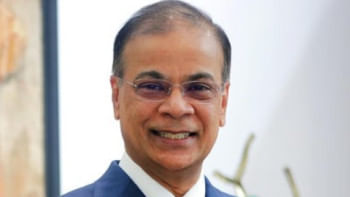1,000 illegal deep tube wells lift water in city
Excessive use of underground water of the capital through deep tube wells, and filling up of low-lying land, canals and water bodies are causing the underground water level to drop alarmingly.
Experts say that this could put the city dwellers in severe water crisis in future and also cause land to subside.
Chief Engineer of Dhaka Wasa Mohammad Nurul Haque said there are 1,000 unauthorised deep tube wells in the city. Apart from these, Wasa set up 513 deep tube wells to meet the growing water demand, he said.
The drop in underground water level has already forced Dhaka Water Supply and Sewerage Authority (Wasa) to pump water from the second layer (first confined aquifer) at 70 points, including at Mirpur, Nakhalpara, Ibrahimpur and Manipur, Wasa officials said.
Md Eftekharul Alam, engineer of Bangladesh Agricultural Development Corporation (BADC), said 80 to 90 percent water of the first layer (unconfined aquifer) is almost finished while the pressure of second layer (first confined aquifer) have started to fall even though they started using the second layer only a few years ago.
Managing Director of Wasa Raihanul Abedin said due to dependence on deep tube wells, water layers in the city are dropping around three metres a year on average.
Still, 85 percent of Dhaka Wasa's water comes from underground and the rest from surface water treated at Syedabad Water Treatment Plant and Chadnighat Water Treatment Plant in Dhaka and Godnail Water Treatment Plant and Sonakanda Water Treatment Plant in Narayanganj.
Wasa is capable of delivering around 190 crore litres of water a day against a demand of 210 crore litres, Wasa officials say.
Acknowledging the problem, Wasa MD Abedin said they have already initiated setting up Syedabad Water Treatment Plant Phase-II, with a capacity of providing 22.5 crore litres a day, and Khilkhet Water Treatment Plant, with a capacity of delivering 50 crore litres a day, to reduce dependency on underground water.
According to the statistics of Bangladesh Water Development Board (BWDB), underground water level in Mirpur was 15.60 metres below the surface in 1991, 38.02 metres in 2000 and 69.35 in 2008. In Mohammadpur, it was 18.99 metres in 1991, 22.05 metres in 2000, ar 37.58 metres in 2008. In Sabujbagh, it was 24.48 metres in 1991, 51.58 in 2001 and 61.88 metres in 2008. In Sutrapur it was 12.73 metres in 1991, 18.79 metres in 2000, 20.95 metres in 2008. In Dhaka Cantonment, it was 15.60 metres in 1991, 28.90 metres in 2000 and 29.74 metres in 2008.
Exploitation of underground water has its limits and depends on how much the underground water is replenished every year, experts said.
Without considering this, Wasa has been lifting water from underground. If this goes on, it will trigger disasters like subsiding of land, said a hydrologist of BWDB.
Eftekharul said underground water level drop rate was a foot a year in the early 80s. The rate rose to six feet a year in 2005.
Eftekharul suggested that rainwater on the roofs of each building in the city be harvested. He said the government should have a provision that only buildings with rainwater harvesting systems would be approved.
Eftekhar also suggested that the use of surface water instead of the underground water be increased since this would allow underground water to replenish naturally or artificially.
He said it is also very important to stop pollution of rivers around the capital, make industries install effluent treatment plants and set up waste treatment plants.
He said while preparing the underground water zone map of the city, the BADC in 2005 found Gulshan-Banani-Baridhara Lake recharging water but other water bodies, including Dhanmondi Lake, are not recharging due to silt at the bottom.

 For all latest news, follow The Daily Star's Google News channel.
For all latest news, follow The Daily Star's Google News channel. 



Comments